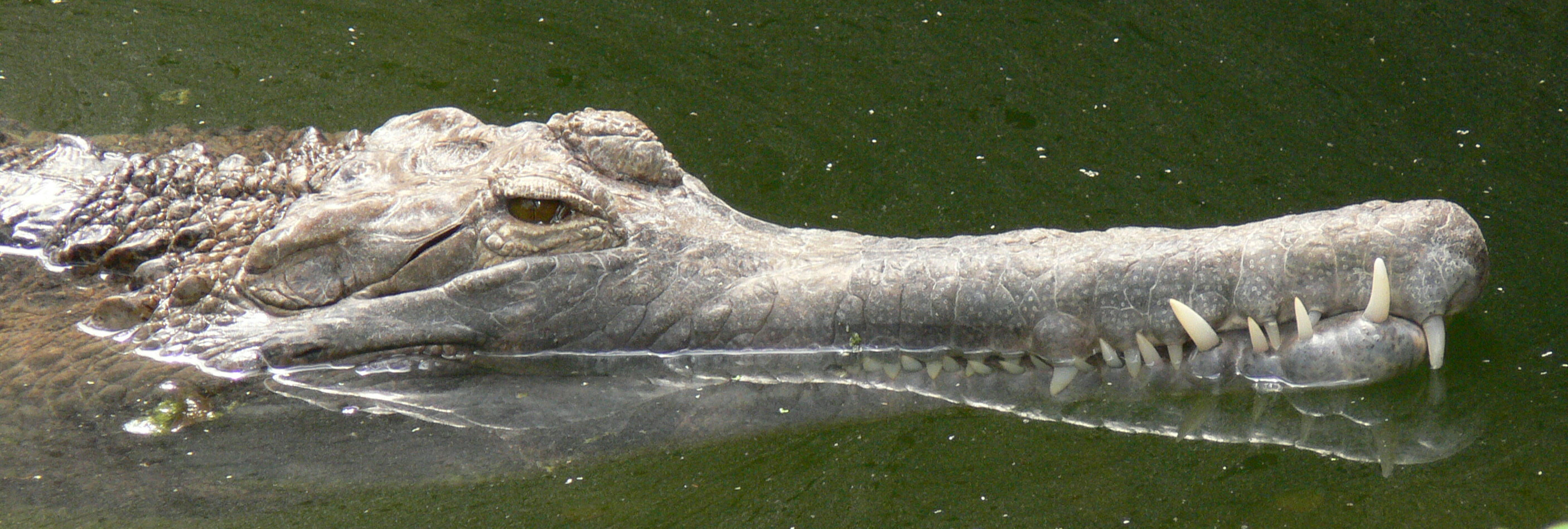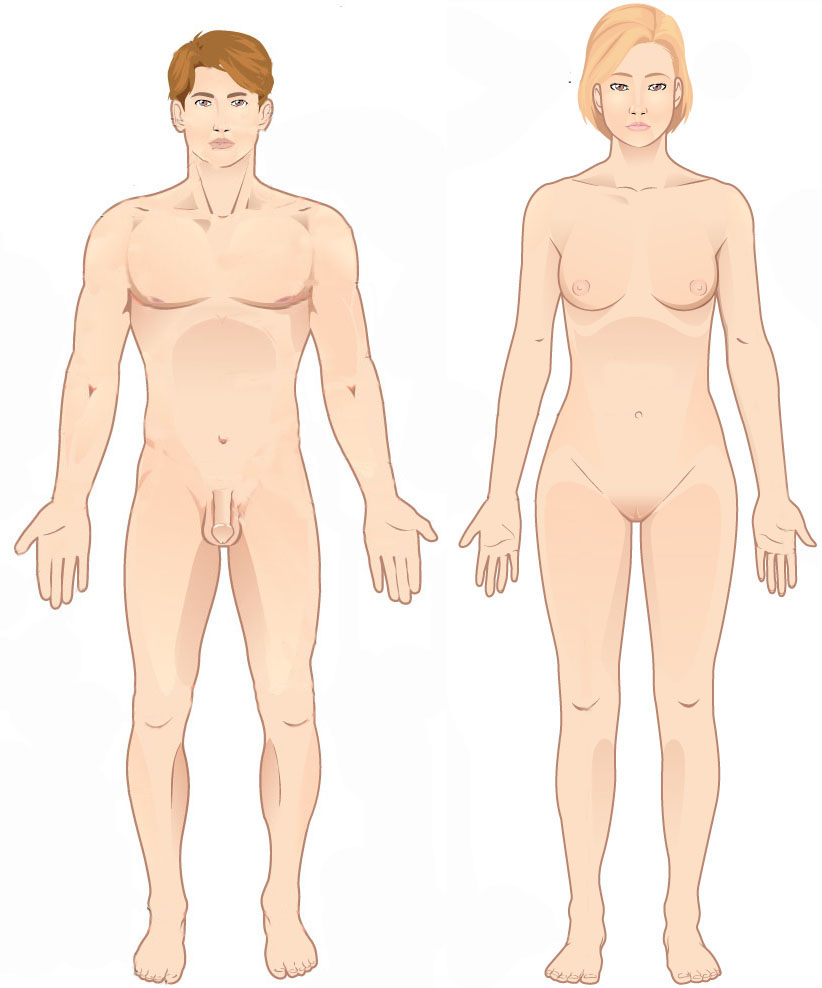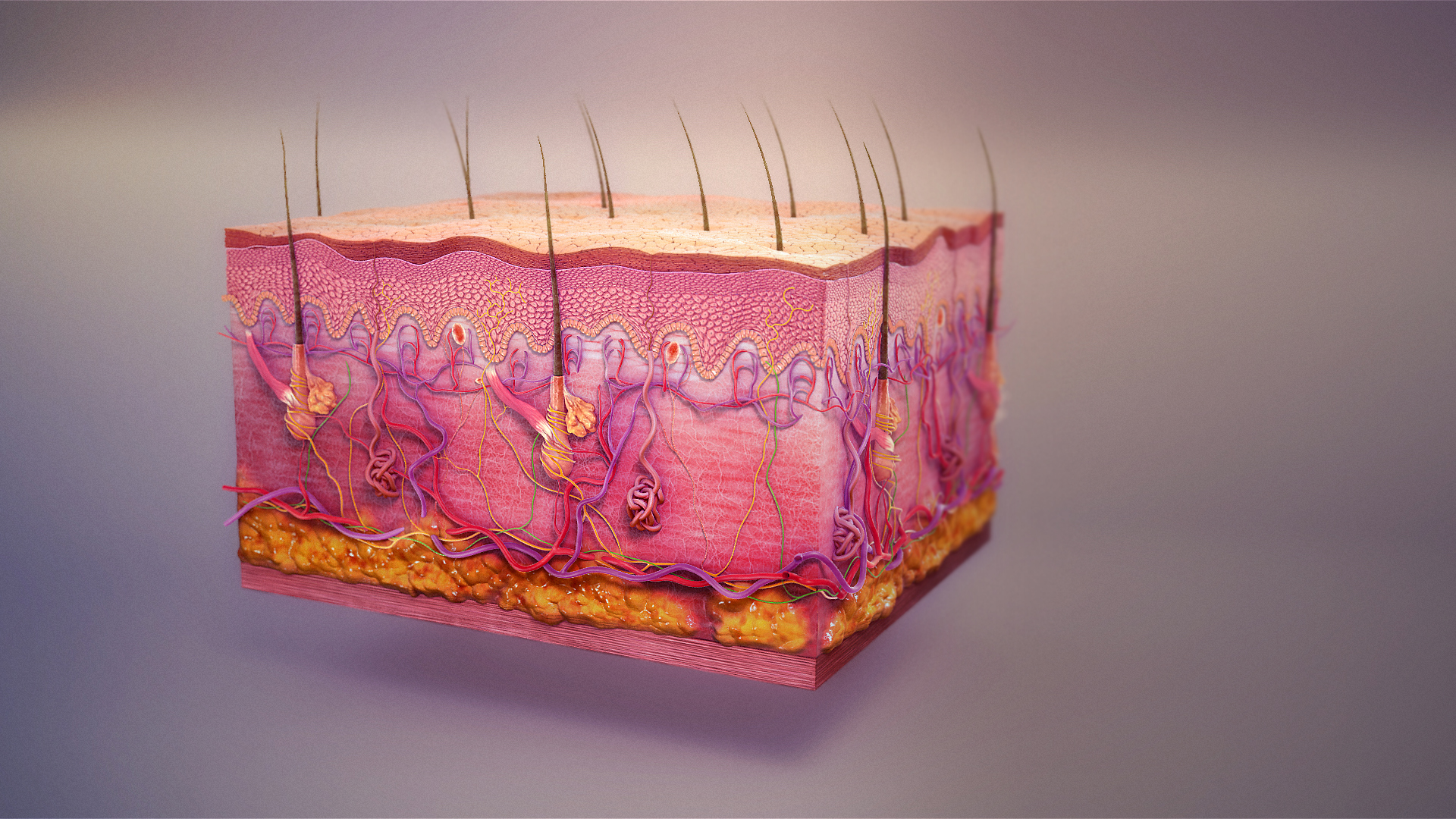|
Sunda Gharial
The false gharial (''Tomistoma schlegelii''), also known by the names Malayan gharial, Sunda gharial and tomistoma is a freshwater crocodilian of the family Gavialidae native to Peninsular Malaysia, Borneo, Sumatra and Java. It is listed as Endangered on the IUCN Red List, as the global population is estimated at around 2,500 to 10,000 mature individuals. The species name ''schlegelii'' honors Hermann Schlegel. Characteristics The false gharial is dark reddish-brown above with dark brown or black spots and cross-bands on the back and tail. Ventrals are grayish-white, with some lateral dark mottling. Juveniles are mottled with black on the sides of the jaws, body, and tail. The smooth and unornamented snout is extremely long and slender, parallel sided, with a length of 3.0 to 3.5 times the width at the base. All teeth are long and needle-like, interlocking on the insides of the jaws, and are individually socketed. The dorsal scales are broad at midbody and extend onto the side ... [...More Info...] [...Related Items...] OR: [Wikipedia] [Google] [Baidu] |
Late Pleistocene
The Late Pleistocene is an unofficial Age (geology), age in the international geologic timescale in chronostratigraphy, also known as the Upper Pleistocene from a Stratigraphy, stratigraphic perspective. It is intended to be the fourth division of the Pleistocene Epoch within the ongoing Quaternary Period. It is currently defined as the time between 129,000 and c. 11,700 years ago. The late Pleistocene equates to the proposed Tarantian Age of the geologic time scale, preceded by the officially ratified Chibanian (commonly known as the Middle Pleistocene). The beginning of the Late Pleistocene is the transition between the end of the Penultimate Glacial Period and the beginning of the Last Interglacial around 130,000 years ago (corresponding with the beginning of Marine Isotope Stage 5). The Late Pleistocene ends with the termination of the Younger Dryas, some 10th millennium BC, 11,700 years ago when the Holocene Epoch began. The term Upper Pleistocene is currently in use as a p ... [...More Info...] [...Related Items...] OR: [Wikipedia] [Google] [Baidu] |
False Gharial (Tomistoma Schlegelii), Gembira Loka Zoo, 2015-01-15 01
The false gharial (''Tomistoma schlegelii''), also known by the names Malayan gharial, Sunda gharial and tomistoma is a freshwater crocodilian of the Family (biology), family Gavialidae native to Peninsular Malaysia, Borneo, Sumatra and Java. It is listed as Endangered species, Endangered on the IUCN Red List, as the global population is estimated at around 2,500 to 10,000 mature individuals. The Specific name (zoology), species name ''schlegelii'' honors Hermann Schlegel. Characteristics The false gharial is dark reddish-brown above with dark brown or black spots and cross-bands on the back and tail. Ventrals are grayish-white, with some lateral dark mottling. Juveniles are mottled with black on the sides of the jaws, body, and tail. The smooth and unornamented snout is extremely long and slender, parallel sided, with a length of 3.0 to 3.5 times the width at the base. All teeth are long and needle-like, interlocking on the insides of the jaws, and are individually socketed. ... [...More Info...] [...Related Items...] OR: [Wikipedia] [Google] [Baidu] |
Bite Force
Bite force quotient (BFQ) is a numerical value commonly used to represent the bite force of an animal adjusted for its body mass, while also taking factors like the allometry effects. The BFQ is calculated as the regression of the quotient of an animal's bite force in newtons divided by its body mass in kilograms. The BFQ was first applied by Wroe et al. (2005) in a paper comparing bite forces, body masses and prey size in a range of living and extinct mammalian carnivores, later expanded on by Christiansen & Wroe (2007). Results showed that predators that take relatively large prey have large bite forces for their size, i.e., once adjusted for allometry Allometry (Ancient Greek "other", "measurement") is the study of the relationship of body size to shape, anatomy, physiology and behaviour, first outlined by Otto Snell in 1892, by D'Arcy Thompson in 1917 in ''On Growth and Form'' and by Jul .... The authors predicted bite forces using beam theory, based on the directly p ... [...More Info...] [...Related Items...] OR: [Wikipedia] [Google] [Baidu] |
Romulus Whitaker
Romulus Earl Whitaker (born 23 May 1943) is an American-born Indian herpetologist, wildlife conservationist, and founder of the Madras Snake Park, the Andaman and Nicobar Environment Trust (ANET), and the Madras Crocodile Bank Trust. In 2008, Whitaker was selected as an associate laureate in the 2008 Rolex Awards for Enterprise for his efforts to create a network of rainforest research stations throughout India. In 2005, he was a winner of a Whitley Award for outstanding leadership in nature conservation. He used this award to found the Agumbe Rainforest Research Station in Karnataka, for the study of king cobras and their habitat. For his work in wildlife conservation, he received the Padma Shri award in 2018 by the Government of India. Background and personal life Whitaker (known as "Rom") was born in New York City, United States, to an American couple. His mother, Doris Norden, was an artist, and his father served in the United States Army. He has one older sister, Gai ... [...More Info...] [...Related Items...] OR: [Wikipedia] [Google] [Baidu] |
Gharial
The gharial (''Gavialis gangeticus''), also known as gavial or fish-eating crocodile, is a crocodilian in the family (biology), family Gavialidae and among the longest of all living crocodilians. Mature females are long, and males . Adult males have a distinct boss at the end of the snout, which resembles an earthenware pot known as a ''ghara'', hence the name "gharial". The gharial is well adapted to catching fish because of its long, narrow snout and 110 sharp, interlocking teeth. The gharial probably evolved in the northern Indian subcontinent. Fossil gharial remains were excavated in Pliocene deposits in the Sivalik Hills and the Narmada River valley. It currently inhabits rivers in the plains of the northern part of the Indian subcontinent. It is the most thoroughly aquatic crocodilian, and leaves the water only for basking and building nests on moist sandbanks. Adults mate at the end of the cold season. Females congregate in spring to dig nests, in which they lay 20–95 e ... [...More Info...] [...Related Items...] OR: [Wikipedia] [Google] [Baidu] |
Freshwater Crocodile
The freshwater crocodile (''Crocodylus johnstoni)'', also known Common name, commonly as the Australian freshwater crocodile, Johnstone's crocodile, and the freshie, is a species of crocodile native to the northern regions of Australia. Unlike its much larger Australian relative, the saltwater crocodile, the freshwater crocodile is not known as a man-eater, although it bites in self-defence, and brief, nonfatal attacks have occurred, apparently the result of mistaken identity. Taxonomy and etymology When Gerard Krefft named the species in 1873, he intended to commemorate the man who first sent him preserved specimens, Australian native police officer and amateur naturalist Robert Arthur Johnstone (1843–1905). However, Krefft made an error in writing the name, and for many years, the species has been known as ''C. johnsoni''. Recent studies of Krefft's papers have determined the correct spelling of the name, and much of the literature has been updated to the correct usage, but ... [...More Info...] [...Related Items...] OR: [Wikipedia] [Google] [Baidu] |
Slender-snouted Crocodile
''Mecistops'' is a genus of crocodiles, the slender-snouted crocodiles, native to sub-Saharan Africa. Taxonomy and etymology Traditionally placed in ''Crocodylus'', recent studies in DNA and morphology have shown that it is in fact basal to ''Crocodylus'', thus was moved its own genus. This genus itself was long considered to contain only one species, '' M. cataphractus'', but recent genetic analysis has revealed the existence of two species: the West African slender-snouted crocodile (''M. cataphractus'') and the Central African slender-snouted crocodile (''M. leptorhynchus''). Both species diverged during the Miocene (about 6.5–7.5 million years ago) and are separated by the Cameroon Volcanic Line. Phylogeny The cladogram below is based on two studies that combined morphological and molecular (DNA sequencing) data. (Note that most morphological analyses find a closer relationship between '' Euthecodon'' and '' Brochuchus''.) Alternatively, other morphological studie ... [...More Info...] [...Related Items...] OR: [Wikipedia] [Google] [Baidu] |
Caudal (anatomical Term)
Standard anatomical terms of location are used to describe unambiguously the anatomy of humans and other animals. The terms, typically derived from Latin or Greek roots, describe something in its standard anatomical position. This position provides a definition of what is at the front ("anterior"), behind ("posterior") and so on. As part of defining and describing terms, the body is described through the use of anatomical planes and axes. The meaning of terms that are used can change depending on whether a vertebrate is a biped or a quadruped, due to the difference in the neuraxis, or if an invertebrate is a non-bilaterian. A non-bilaterian has no anterior or posterior surface for example but can still have a descriptor used such as proximal or distal in relation to a body part that is nearest to, or furthest from its middle. International organisations have determined vocabularies that are often used as standards for subdisciplines of anatomy. For example, '' Terminologia ... [...More Info...] [...Related Items...] OR: [Wikipedia] [Google] [Baidu] |
Dorsum (anatomy)
Standard anatomical terms of location are used to describe unambiguously the anatomy of humans and other animals. The terms, typically derived from Latin or Greek roots, describe something in its standard anatomical position. This position provides a definition of what is at the front ("anterior"), behind ("posterior") and so on. As part of defining and describing terms, the body is described through the use of anatomical planes and axes. The meaning of terms that are used can change depending on whether a vertebrate is a biped or a quadruped, due to the difference in the neuraxis, or if an invertebrate is a non-bilaterian. A non-bilaterian has no anterior or posterior surface for example but can still have a descriptor used such as proximal or distal in relation to a body part that is nearest to, or furthest from its middle. International organisations have determined vocabularies that are often used as standards for subdisciplines of anatomy. For example, '' Termi ... [...More Info...] [...Related Items...] OR: [Wikipedia] [Google] [Baidu] |
Nuchal
The nape is the back of the neck. In technical anatomical/medical terminology, the nape is also called the nucha (from the Medieval Latin rendering of the Arabic , ). The corresponding adjective is ''nuchal'', as in the term ''nuchal rigidity'' for neck stiffness. In many mammals, the nape bears a loose, non-sensitive area of skin, known as the scruff, by which a mother carries her young by her teeth, temporarily immobilizing it during transport. In the mating of cats The cat (''Felis catus''), also referred to as the domestic cat or house cat, is a small domesticated carnivorous mammal. It is the only domesticated species of the family Felidae. Advances in archaeology and genetics have shown that the ..., the male will grip the female's scruff with his teeth to help immobilize her during the act, a form of pinch-induced behavioral inhibition. Cultural connotations In traditional Japanese culture, the was one of the few areas of the body (other than face and ha ... [...More Info...] [...Related Items...] OR: [Wikipedia] [Google] [Baidu] |
Reptile Scale
Reptile skin is covered with scutes or Scale (anatomy), scales which, along with many other characteristics, distinguish reptiles from animals of other classes. They are made of Alpha-keratin, alpha and beta-keratin and are formed from the epidermis (contrary to fish, in which the scales are formed from the dermis). The scales may be ossified or tubercular, as in the case of lizards, or modified elaborately, as in the case of snakes.Malcolm Arthur Smith, Smith, Malcolm A. (1931). ''The Fauna of British India, Ceylon and Burma. Vol. I.—Loricata, Testudines.'' London: Secretary of State for India in Council. (Taylor and Francis, printers). xxviii + 185 pp. + Plates I-II. ("Skin", p. 30). The scales on the top of lizard and snake heads has also been called ''pileus'', after the Latin word for cap, referring to the fact that these scales sit on the skull like a cap. Lizard scales Lizard scales vary in form from tubercle, tubercular to platelike, or imbricate (overlapping). These sc ... [...More Info...] [...Related Items...] OR: [Wikipedia] [Google] [Baidu] |
Integumentary
The integumentary system is the set of organs forming the outermost layer of an animal's body. It comprises the skin and its appendages, which act as a physical barrier between the external environment and the internal environment that it serves to protect and maintain the body of the animal. Mainly it is the body's outer skin. The integumentary system includes skin, hair, Scale (zoology), scales, feathers, Hoof, hooves, claws, and Nail (anatomy), nails. It has a variety of additional functions: it may serve to maintain water balance, protect the deeper tissues, excrete wastes, and regulate Core temperature, body temperature, and is the attachment site for sensory receptors which detect pain, sensation, pressure, and temperature. Structure Skin The skin is one of the largest organs of the body. In humans, it accounts for about 12 to 15 percent of total body weight and covers 1.5 to 2 m2 of surface area. The skin (integument) is a composite organ, made up of at least two maj ... [...More Info...] [...Related Items...] OR: [Wikipedia] [Google] [Baidu] |






